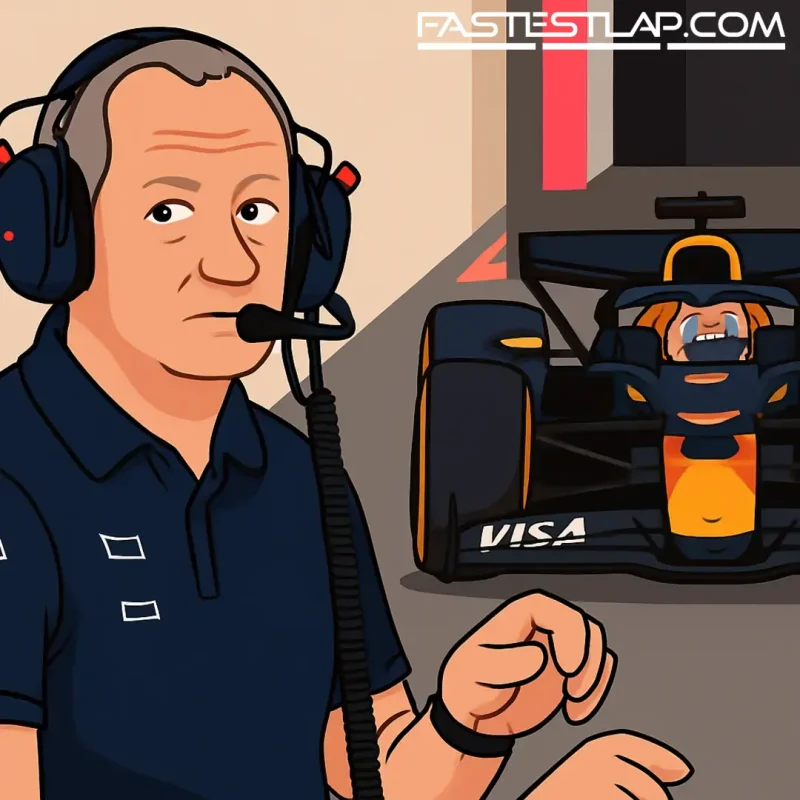Red Bull thinks it’s finally cracked the RB21’s code. In Singapore’s furnace, where the team’s recent form tends to wilt, Max Verstappen stuck it on the front row and chased George Russell home for second. It wasn’t just a good result; it was a clue. The car, Paul Monaghan says, now behaves.
Across 2025, Red Bull has been feeding the RB21 a steady diet of small-but-meaningful updates. Floors, engine covers, and, most recently, a front wing tweak that looks innocuous until you dig into the intent: an evolved profile with increased camber on select sections to pull out more load without corrupting the flow. It’s the kind of targeted adjustment you make when you’re not guessing anymore.
“The car is better,” Monaghan, Red Bull’s chief engineer, said in the Singapore paddock. “Can we challenge the previous order at high-downforce tracks? We’ll have a go. It should be a bit better. The question is, how much?”
The answer, recently, has been visible on the timing screens. The RB21 has taken two wins from the last four, with Verstappen backing that up with a pair of seconds. In Singapore, a venue that exposed Red Bull’s weak spots last year and earlier this season, the new front wing made its debut. It’s the latest piece in a puzzle that’s included a Monza floor and earlier tweaks around Zandvoort—and it might be the last big swing of 2025.
“It’s a subtle revision,” Monaghan said of the Marina Bay wing. “When the previous version came out [around Zandvoort], the evidence built up—‘we could do this, we could do that.’ We had the capacity, so we pushed the button. It should be the last one for this year. Maybe a flap trim for Vegas, as usual, but otherwise this is pretty much it.”
What’s changed as much as the hardware is Red Bull’s relationship with the car. Correlation gremlins have dogged the team at times over the last two seasons. That appears to be easing.
“We delivered pretty much what we expected,” Monaghan noted. “Nothing in there screamed ‘this is so much better than we thought.’ It behaved. What we’re really getting on top of is the complete behaviour of the car. We’ve learned things, found things, and it’s a combination of many little changes—new aero parts, new bodywork surfaces, some other stuff. It’s not massive on lap time if you isolate it, but corner by corner it’s there.”
Verstappen, typically unsentimental about machinery, sounded relieved. The RB21 has stopped making him chase phantoms.
“The last three weekends have been really nice,” he said after Singapore. “Before that, we were always throwing the setup left and right because it just wasn’t working. Sometimes you’d get an OK weekend, but now it’s been solid. We’ve been fine-tuning—exactly what you want. Some layouts will still suit us more than others, but the base is a lot more solid.”
There’s title context here, of course. The early-season inconsistency put Verstappen on the back foot, but the recent uptick has dragged him back into the conversation as the championship heads into its final six rounds. The gap to Oscar Piastri remains sizeable, yet the tone in the Red Bull garage has shifted from firefighting to forward planning—without forgetting the bigger picture.
That bigger picture is 2026. The sport is gearing up for sweeping new rules, and every hour sunk into a 2025 upgrade is, theoretically, an hour not spent on the next revolution. Yet Red Bull’s leadership is comfortable with the trade-off.
From the team’s perspective, continuing to develop the RB21 isn’t just about squeezing points out of the run-in; it’s about stress-testing the tools and methodologies that will design the 2026 car. Validating wind tunnel and CFD directions on a live project—under pressure, at varied tracks—gives confidence you can’t simulate.
“It’s important we get to the bottom of whether the project has more performance,” said Red Bull boss Laurent Mekies, addressing the timing of these late-season updates. “We’ll elaborate next year’s project, even if the regulations are completely different, with the same tools and the same methodology. We need to validate that our way of looking at the data is correct and that it produces that level of performance. That gives us confidence for the winter.
“Of course it comes at a cost to the ’26 project, undoubtedly. But we feel it’s the right trade-off for us.”
Taken together, the messaging out of Singapore was clear: this isn’t Red Bull flailing to keep up; it’s Red Bull methodically closing the loop on a car that started the season on a knife-edge. The RB21 now responds to setup rather than resisting it. The upgrades aren’t headline-grabbing, but they’re stacking—and Verstappen is back to driving a predictable, quick car.
The final word goes to Monaghan, who rarely deals in hyperbole. He knows the next races will test whether “a bit better” becomes “good enough” at the venues that have punished the RB21’s weaker traits. But you could hear the quiet satisfaction of a team that’s found the thread.
“It’s lots of small gains,” he said. “Corner by corner. That’s how you win races—and sometimes, championships.”




